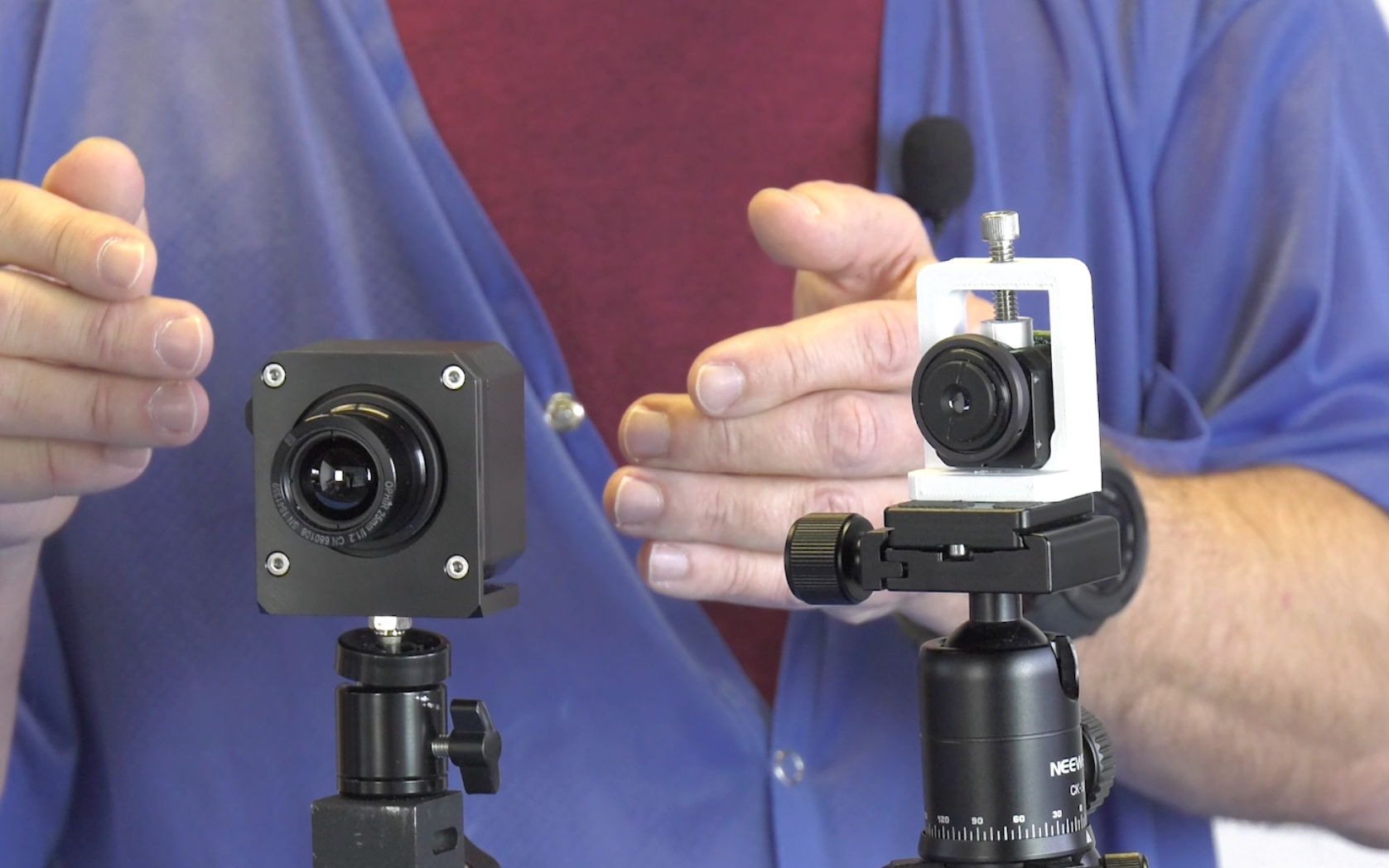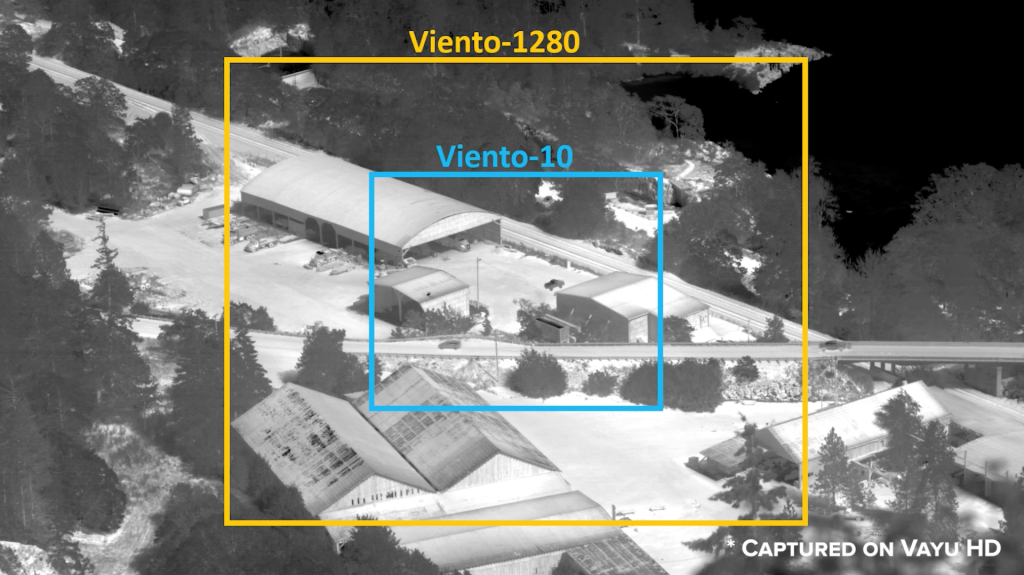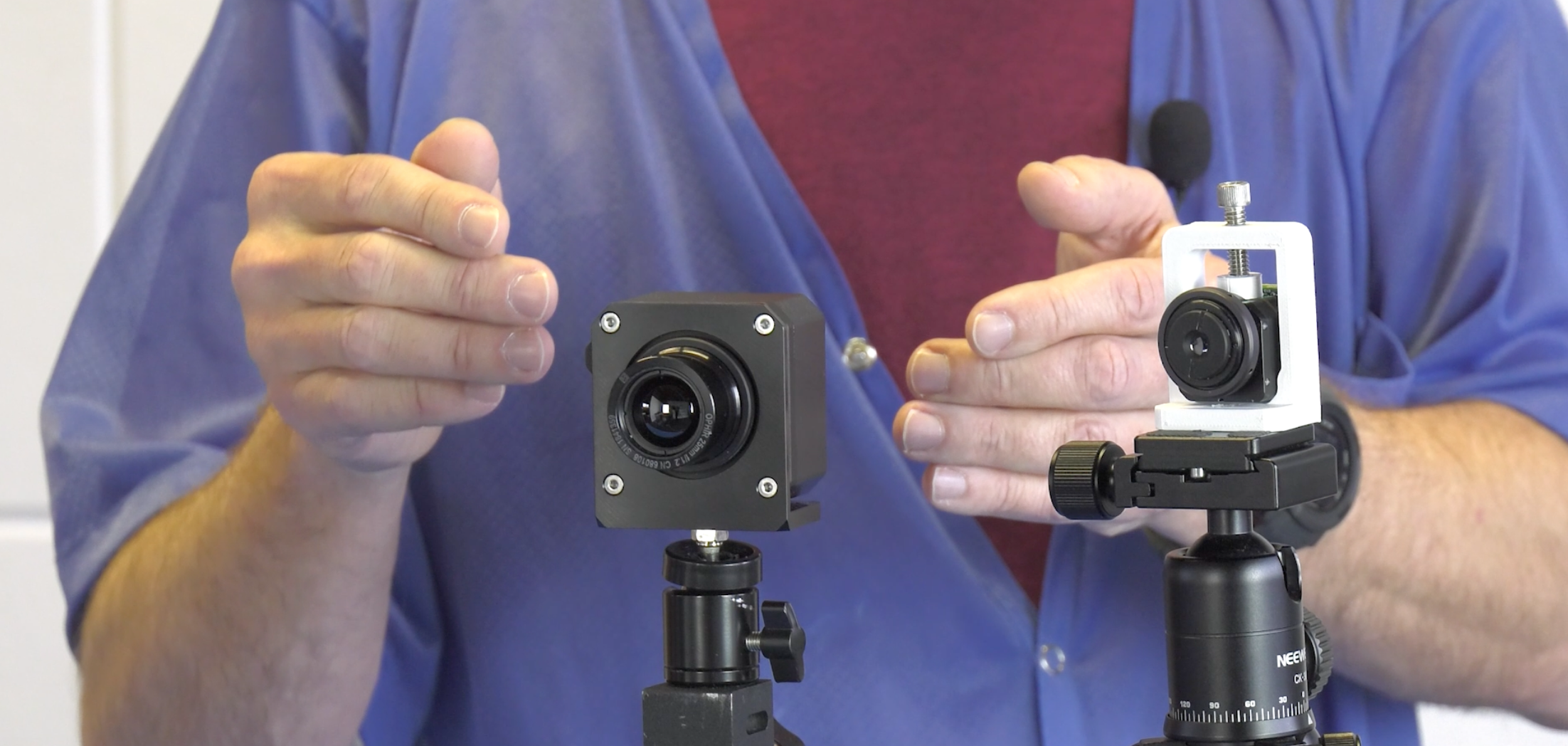Last modified on November 11th, 2024 at 1:10 pm
Products Seen In this Video
Welcome back to Ask an Expert. I’m Stan Voynick, Chief Technology Officer at Sierra-Olympia Technologies. Today, we’ll be discussing field of view and instantaneous field of view, how they work together to form the thermal images in airborne systems, security and surveillance, optical gas imaging, and other thermal imaging applications. Three of the most important factors we consider when we’re designing a thermal imaging system are field of view, aperture and spectral response. I’ll be going over some questions about Field of View and closely related cousin instantaneous field of view.
What our field of view and instantaneous field of view?
Field of view describes the entire extent of the whole image that is being detected by an infrared thermal imaging system. It can be stated in terms of the angle, the extent of the angle, starting from your imager out into the scene. Or it can be described as the linear extent of the scene at some distance from the imager. Instantaneous field of view, or IFOV, as we call it, is the angle subtended by just a single pixel in your detector array out into the scene. This can be calculated as the pixel size divided by the focal length.
How would one increase the field of view of an infrared imaging system?
There are two knobs that we have that we can turn to adjust this. One is the size of the detector array in the system, and the other is the focal length of the lens that we put on the system. Let’s talk about detector array size first. Let’s assume that we have the same focal length lens on this on these two cameras to take that out of consideration. This is the Viento-10, which has a 640 pixel array of ten micron pixels. This is the Viento 1280 (figure 1), which has the same ten micron pixels, but it has twice as many pixels in width, 1280 pixels in width. So its detector array is twice as large as the Viento-10 with a detector array twice as large as the Viento- 10 (figure 1). The Viento 1280 has roughly twice the field of view as the Viento-10 (figure 2). Notice so far I’m just talking in terms of the detector array with 640. In the case of the Viento-10, 1280 pixels in the case of the Viento 1280 detector arrays usually have a different height than they do width. That means they also have a vertical field of view that can be calculated. But for simplicity of this discussion, I’m just going to talk about the horizontal field of view.


How lens focal length affects field of view.
If we were to look at the Vayu HD with a 50 millimeters lens and a 25 millimeter lens, the 25mm lens has one half the focal length of the 50mm, and therefore again, it will roughly double the field of view if I install the 25mm lens instead of the 50 millimeters lens.
So how do we decide which of these methods to use to increase?
Field of view depends on the application. If we decrease the focal length, we will increase the overall field of view, but we will also increase that number I talked about earlier, the instantaneous field of view, the IFOV. That has the effect of lowering the spatial resolution down at the level of the individual pixel. That may be okay for some applications, situational awareness applications that just rely mostly on a big picture view of a scene, for example. On the other hand, there can be applications where you want a large field of view, but you also want to maintain spatial resolution. In that case, the way you would increase field of view would be to increase the detector array size. That would provide a larger field of view while maintaining the same spatial resolution as before. These are the kinds of considerations that we can help you work out in deciding how to use an infrared imaging system in which system to choose.


